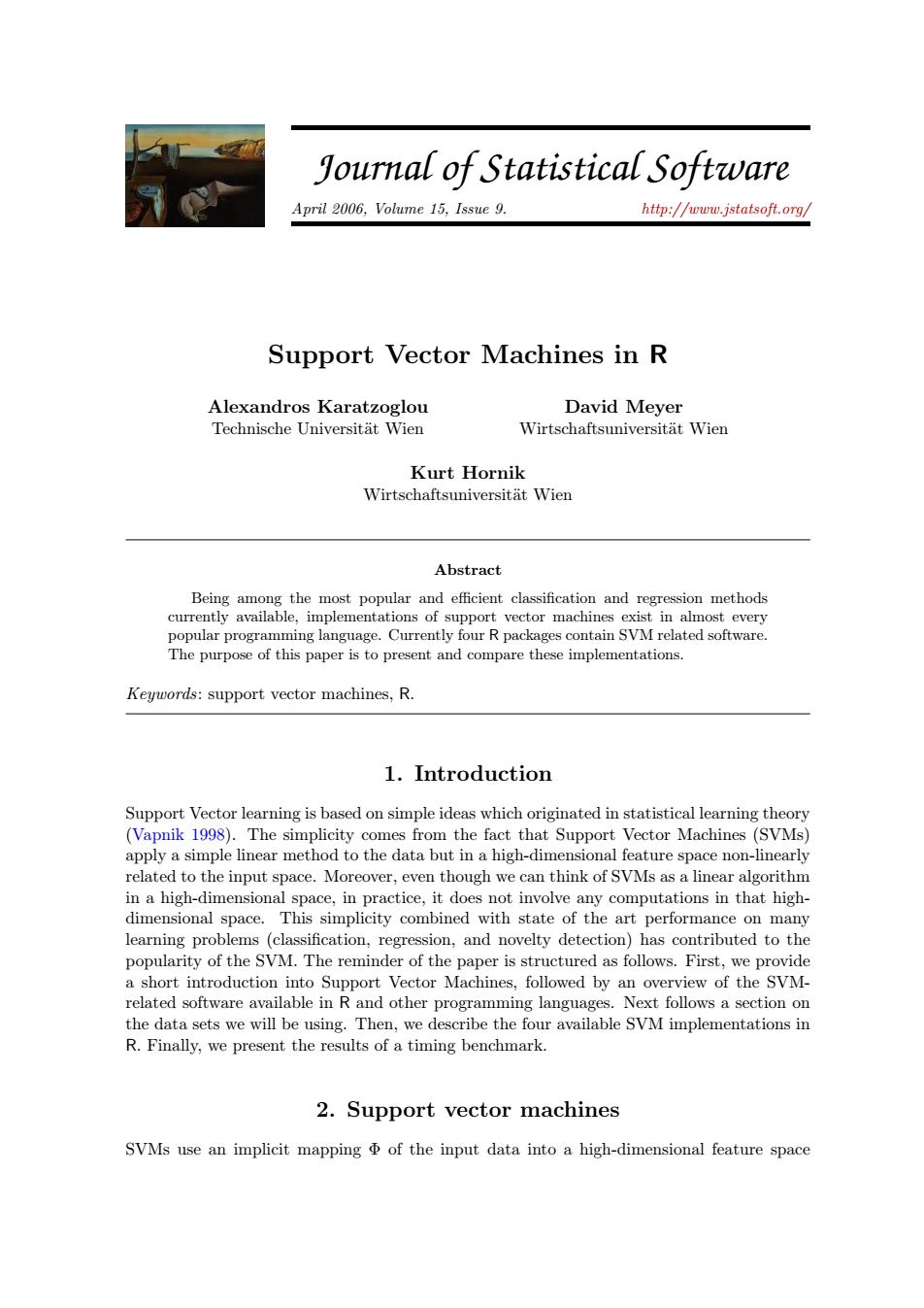正在加载图片...

Journal of Statistical Software April 2006,Volume 15,Issue 9. http://www.jstatsoft.org/ Support Vector Machines in R Alexandros Karatzoglou David Meyer Technische Universitat Wien Wirtschaftsuniversitat Wien Kurt Hornik Wirtschaftsuniversitat Wien Abstract Being among the most popular and efficient classification and regression methods currently available,implementations of support vector machines exist in almost every popular programming language.Currently four R packages contain SVM related software. The purpose of this paper is to present and compare these implementations. Keywords:support vector machines,R. 1.Introduction Support Vector learning is based on simple ideas which originated in statistical learning theory (Vapnik 1998).The simplicity comes from the fact that Support Vector Machines (SVMs) apply a simple linear method to the data but in a high-dimensional feature space non-linearly related to the input space.Moreover,even though we can think of SVMs as a linear algorithm in a high-dimensional space,in practice,it does not involve any computations in that high- dimensional space.This simplicity combined with state of the art performance on many learning problems(classification,regression,and novelty detection)has contributed to the popularity of the SVM.The reminder of the paper is structured as follows.First,we provide a short introduction into Support Vector Machines,followed by an overview of the SVM- related software available in R and other programming languages.Next follows a section on the data sets we will be using.Then,we describe the four available SVM implementations in R.Finally,we present the results of a timing benchmark. 2.Support vector machines SVMs use an implicit mapping of the input data into a high-dimensional feature spaceJSS Journal of Statistical Software April 2006, Volume 15, Issue 9. http://www.jstatsoft.org/ Support Vector Machines in R Alexandros Karatzoglou Technische Universit¨at Wien David Meyer Wirtschaftsuniversit¨at Wien Kurt Hornik Wirtschaftsuniversit¨at Wien Abstract Being among the most popular and efficient classification and regression methods currently available, implementations of support vector machines exist in almost every popular programming language. Currently four R packages contain SVM related software. The purpose of this paper is to present and compare these implementations. Keywords: support vector machines, R. 1. Introduction Support Vector learning is based on simple ideas which originated in statistical learning theory (Vapnik 1998). The simplicity comes from the fact that Support Vector Machines (SVMs) apply a simple linear method to the data but in a high-dimensional feature space non-linearly related to the input space. Moreover, even though we can think of SVMs as a linear algorithm in a high-dimensional space, in practice, it does not involve any computations in that highdimensional space. This simplicity combined with state of the art performance on many learning problems (classification, regression, and novelty detection) has contributed to the popularity of the SVM. The reminder of the paper is structured as follows. First, we provide a short introduction into Support Vector Machines, followed by an overview of the SVMrelated software available in R and other programming languages. Next follows a section on the data sets we will be using. Then, we describe the four available SVM implementations in R. Finally, we present the results of a timing benchmark. 2. Support vector machines SVMs use an implicit mapping Φ of the input data into a high-dimensional feature space